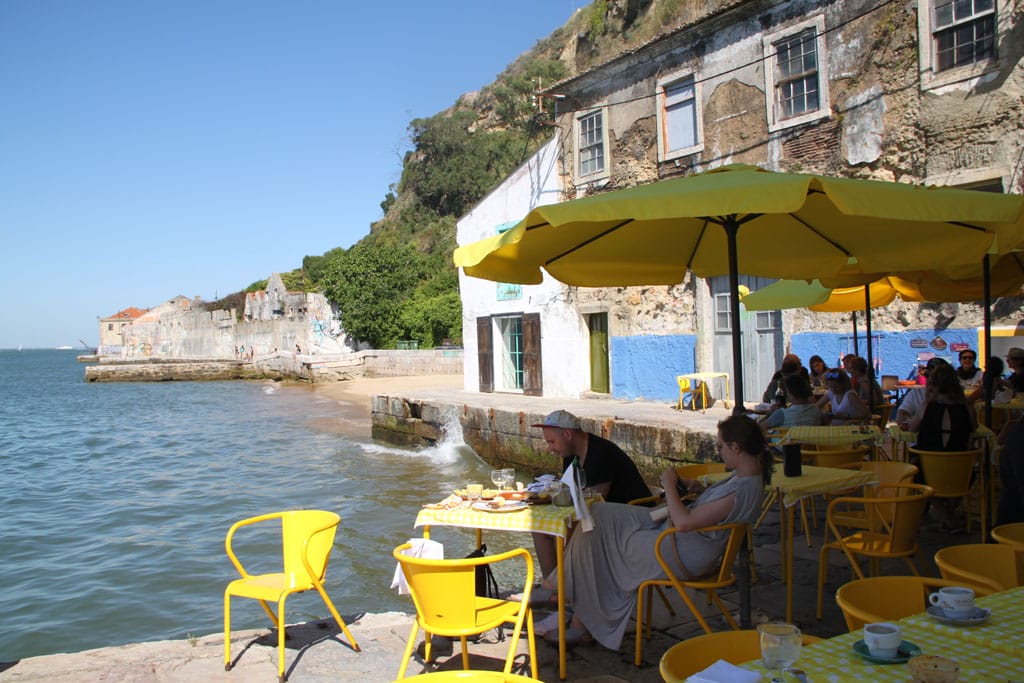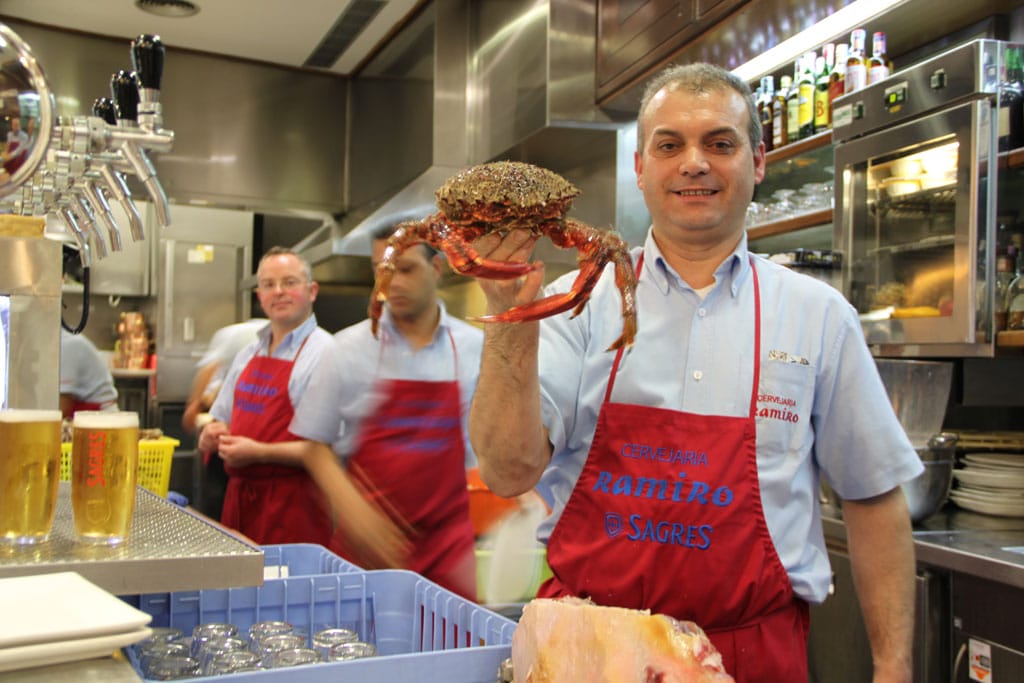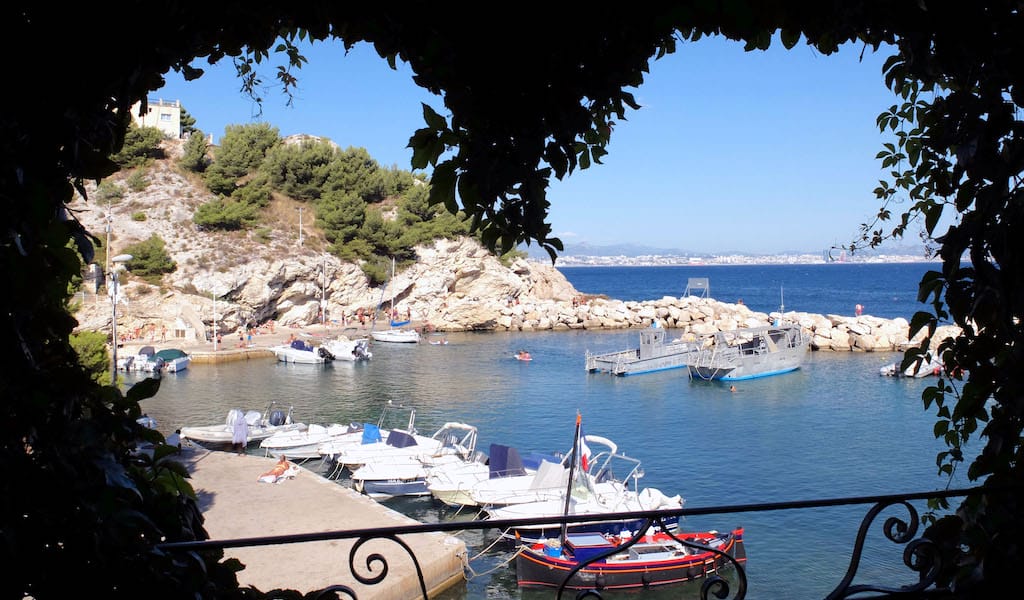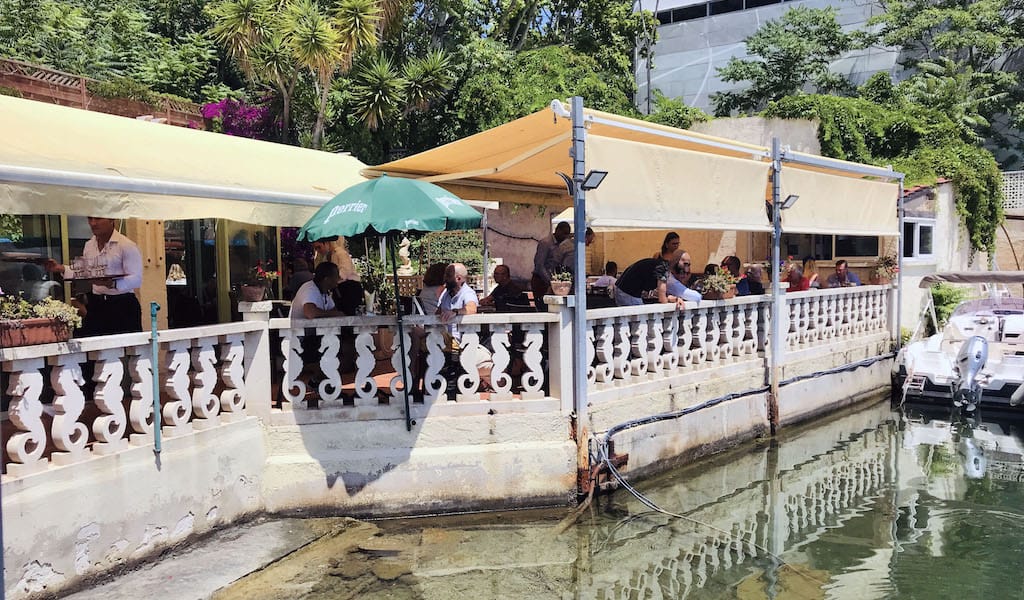Cacilhas is the waterfront area of Almada, a small city reachable via a €1.20 ferry ride from Lisbon’s Cais do Sodré terminus. The district is heavily marked by its shipbuilding past and has an industrious character that, for now, is still preserved in its food culture. Right in front of its boat station is a concentration of traditional marisqueiras, typical seafood houses from where you can glimpse a sweeping view of almost the whole of Lisbon across the other side.
The seafood platter is a must in any of these traditional spots. It is usually composed of stuffed crab, spiny lobster and giant prawns, accompanied by the classic amêijoas à bulhão pato – clams cooked in garlic, coriander, pepper and olive oil. The name is a tribute to 19th-century poet Raimundo António de Bulhão Pato, who lived the last part of his life in Almada and referenced recipes in his writings. Other standard fare are the (usually copious) seafood rice, and the humble prego – the garlic steak sandwich that is the real post-seafood dessert in this part of Portugal.
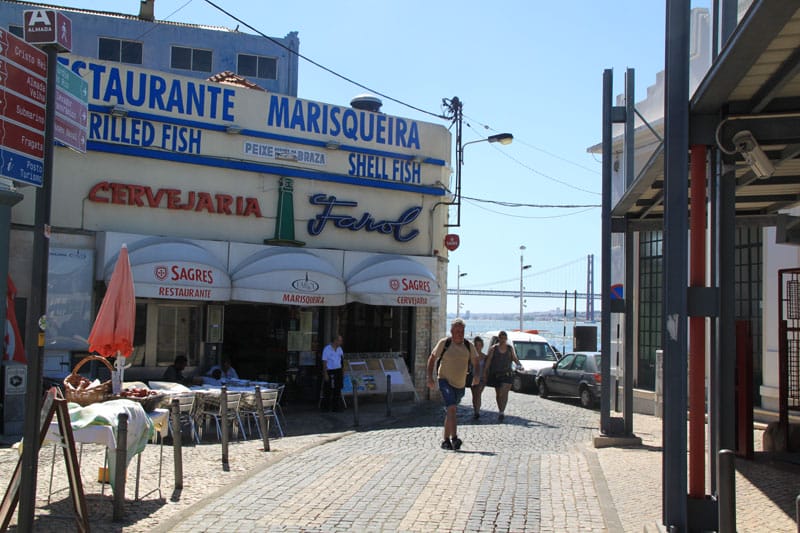
Cacilhas Square has a number of restaurant terraces, perfect for sunset happy hour – every beer is accompanied by a small tray of fresh shrimp, and there is a view of the remains of the Lisnave crane. This structure is a souvenir of an important 1960s shipyard that ended up becoming one of the greatest repair yards in the world, an obvious symbol of success in Portugal. But Lisnave closed in 2000, thanks to the early days of hyper-global competition and real estate pressure, which then triggered a controversial urban development idea, “Cacilhas Manhattan,” in its wake. After a few blocky renderings of some mega-skyscrapers towering over the crane were released, the project, thankfully, didn’t go any further.
The marisqueiras of Cacilhas mark continuity with this area’s past. In the 18th century, ships would enter via the river mouth, docking close to the warehouses along the river and loading up on wine, oil, canned fish and coal to supply the cod fishing fleets as well as the crews selling such products abroad. Some of these warehouses still lie in visible ruin, a decline exacerbated by the construction of the red April 25 bridge in 1966, replacing water transport and all its related commerce and community with road traffic.
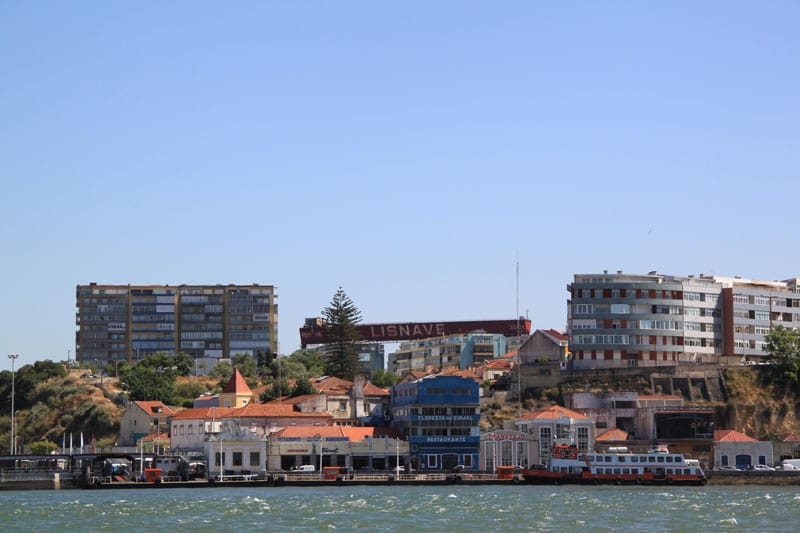
Nowadays, this walk along Cacilhas’s edge is frequented by savvy Lisbon residents who want a Sunday stroll without the hordes and, of course, tourists, who have discovered unprecedented Lisbon views in a city almost exhausted by them. At the end of the 800m walk from the warehouse ruins, close to the monumental lift that takes you up to the “Boca do vento” viewpoint, are a few restaurants with terraces facing the point where the river meets the Atlantic. The oldest one is Ponto Final, which was around when the warehouses were still functioning. Dulcinha Coelho, the current co-owner, was just a customer at that time, but as soon as she could she bought this restaurant out of love for the area and without any expectations. “I didn’t imagine that one day this area was going to be a trendy spot,” she says. The waterside is currently being eyed for renewal projects, with some rebranding ideas being floated around (eg., renaming this side of the waterfront Lisbon’s South Side – in English, not Portuguese).
Such ideas are being vehemently opposed by many in Lisbon who welcome tourism but not its invariable destruction of their neighborhoods. “I would like this promenade to be a cultural and artistic destination,” Coelho says. “Better than those docklands on the other side of the river [Docas, Lisbon’s commercialized leisure promenade]. Then, we would all profit from it.” Ponto Final’s kitchen offers common Portuguese cuisine in comfortable proportions. Specialities of the house are the rice-based dishes; monkfish or Cabidela. Obviously, there is an excellent view.
Information about the ferry at Transportes de Lisboa.
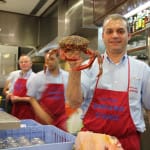 July 8, 2021 Cervejaria Ramiro
July 8, 2021 Cervejaria Ramiro
Cervejaria Ramiro is the undisputed temple of seafood in central Lisbon. The […] Posted in Lisbon August 5, 2020 La Pergola
August 5, 2020 La Pergola
If you ask a Marseillais where to cavort on the coast, most will respond, without […] Posted in Marseille July 16, 2020 Hippocampe
July 16, 2020 Hippocampe
Perched at Marseille’s northern border along the Mediterranean, the port of L’Estaque […] Posted in Marseille
Published on August 02, 2016
Related stories
July 8, 2021
LisbonCervejaria Ramiro is the undisputed temple of seafood in central Lisbon. The more-than-50-year-old business represents an old-school type of eatery: a beer hall where the seafood is fresh and cheap, with a choice from the daily menu or directly from the large aquariums that look out to the street. Taking up two floors of a…
August 5, 2020
MarseilleIf you ask a Marseillais where to cavort on the coast, most will respond, without hesitation, “the Calanques”: turquoise coves tucked between towering limestone cliffs that can only be reached by foot, boat or paddle. Spanning Marseille and Cassis, this national park gets all the glory – and tourist campaigns – for its jaw-dropping grandeur.…
July 16, 2020
MarseillePerched at Marseille’s northern border along the Mediterranean, the port of L’Estaque once teemed with fishermen. Starting in the 17th century, local pêcheurs would catch sardines, tuna, mackerel and poissons de roches (the rockfish that are essential to the city’s iconic bouillabaisse.) In the 1960s, these independent fishermen were swallowed up by the increase in…







































